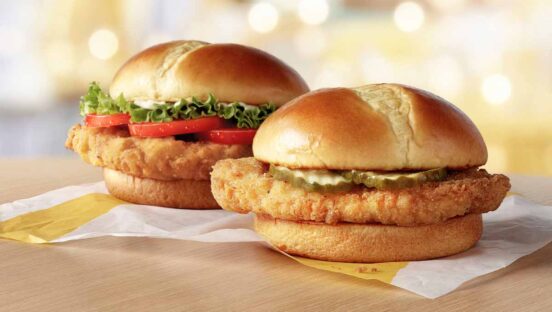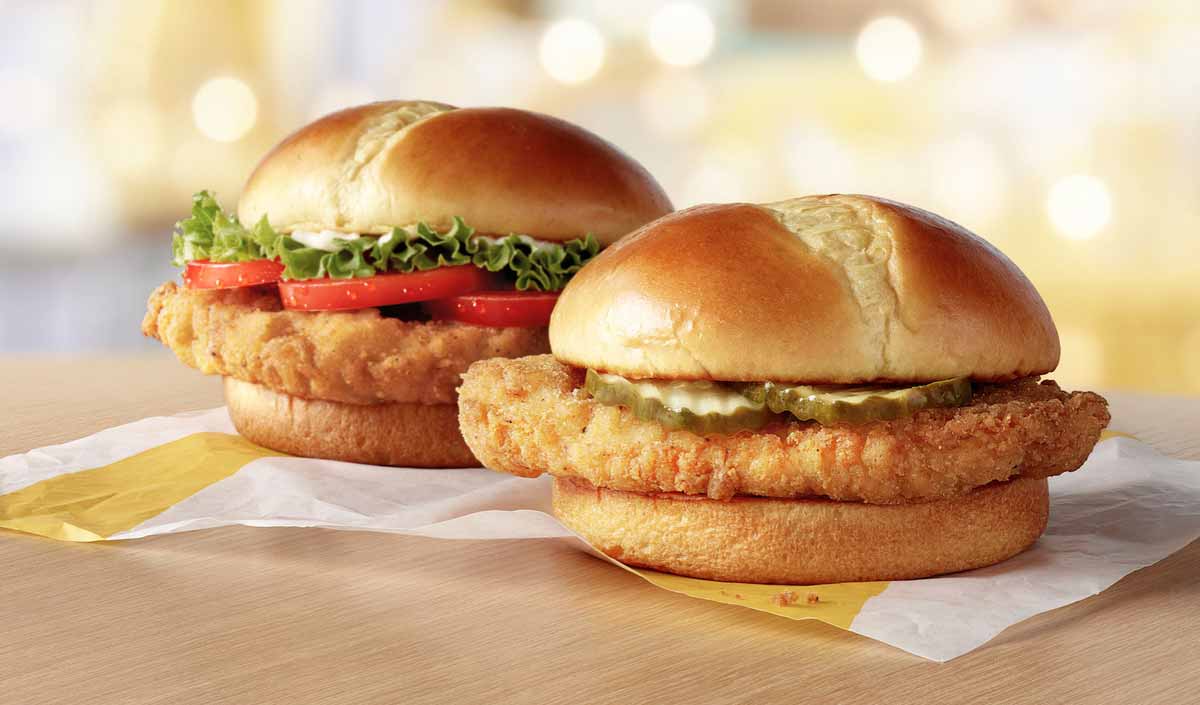More than 1,000 U.S. McDonald’s have reopened dining rooms under reduced seating as the fast-food giant approaches pre-crisis sales levels. The company also put a price tag on a marketing infusion it first revealed in May, and hinted at upcoming menu innovations, from a possible chicken launch to reinvigorated breakfast.
McDonald’s expects to invest roughly $200 million through incremental marketing contributions across the U.S. and its International Operated Markets, it said Tuesday. The number amounts to a month of advertising cooperatives contribution, and is in addition to ongoing contributions from franchised and company-run restaurants.
McDonald’s didn’t elaborate on what the messaging would look like, but it will come with a new CMO at the controls. Alistair Macrow, former marketing chief of internationally operated markets, was promoted to global CMO last week. He filled a position left empty by Silvia Lagnado in October. Colin Mitchell, SVP of global marketing, also left the brand, and Morgan Flatley was promoted to SVP and U.S. chief marketing and digital customer experience officer.
On the sales front, McDonald’s revealed Tuesday in a filing its comps improved sequentially from late March through May, and 95 percent of restaurants globally are now open. Just 100 or so are shuttered domestically, mostly due to unique sites, such as malls.
Same-store sales (year-over-year)
U.S.
- Month ended April 30: –19.2 percent
- Month ended May 31: –5.1 percent
- Quarter to date through May 31: –12 percent
International Operated Markets
- Month ended April 30: –66.7 percent
- Month ended May 31: –40.5 percent
- Quarter to date through May 31: –53.4 percent
International Developmental Licensed Markets & Corporate
- Month ended April 30: –39 percent
- Month ended May 31: –20.9 percent
- Quarter to date through May 31: –29.8 percent
The domestic figure is promising for McDonald’s, where it entered fiscal 2020 with 13,846 of its 38,000 or so restaurants. Even at limited capacity, the chain is nearly 95 percent of the way back to pre-COVID-19 performance. And it was able to sustain that performance throughout all of May.
McDonald’s guest counts remained negative, however, the company said, particularly at the breakfast daypart. Comps continued to benefit from strong average check growth.
This isn’t all that different from 2019 trends. McDonald’s U.S. comparable guest counts declined 1.9 percent last year after falling 2.2. percent in 2018. The figure has tracked negative all but one year since 2012.
Even with red traffic, though, McDonald’s closed 2019 with its best sales performance in more than 10 years as Q4 comps rose 5.9 percent globally and 5.1 percent in the U.S.—the best domestic result in 13 years.
While McDonald’s saw fewer customers, they were spending more. That’s been true during COVID-19, too, as people make meals last and order for multiple parties. There’s not a ton of solo occasions happening, which partly explains the breakfast drop.
According to The NPD Group, the morning meal, which represents a breakfast or morning snack occasion, has suffered the steepest transaction declines throughout the crisis. Morning meal customer transactions at major restaurant chains fell by 18 percent in the week ending June 7 compared to same week in 2019. Lunch transactions declined 11 percent and customer transactions fell 12 percent at dinner.
Revenue Management Solutions, using insights based on point-of-sale data, said overall U.S. breakfast traffic year-over-year has slipped between negative 30–35 percent. They leveled out around negative 15 percent.
McDonald’s CFO Kevin Ozan said in the chain’s April Q1 report that “I think it’s fair to say breakfast is a critical daypart for us, and so, as we start to really get into the recovery phase, getting back at breakfast business is going to be critical for us. I think the point we are trying to make on breakfast is it takes time. It’s a disruption to routines. Reestablishing those routines does take time, but we plan to be very aggressive and make sure that we get back the breakfast business.”
Ozan provided an update Tuesday during a virtual conference call held by Evercore ISI Virtual Consumer & Retail Summit. He said breakfast contributed more than half of McDonald’s 12 percent comp decline so far in Q2. Lunch and dinner have been flat for the most part.
McDonald’s was also looking at bringing new baked goods to breakfast before COVID-19 struck, and “pulled back essentially all marketing activities” in the daypart, CEO Chris Kempczinski said.
But, he added, the brand is ready to ignite initiatives again, and was “just starting to turn the lights back on.” He predicted, like Ozan, a gradual crawl back as McDonald’s tries to rebuild a disrupted routine thrown off by remote work schedules and unemployment. Kempczinski expects the recovery to take a regional path given varied regulations.
He admitted McDonald’s will face more competition on its breakfast turf as well, saying it intends “to defend it.” Wendy’s, despite launching breakfast right before the pandemic, is mixing 8 percent of its total sales from the new daypart.
In the U.S., all restaurants are running with drive thrus, delivery, and/or take-away with a limited menu. There have been reports many franchisees want to keep the latter. That’s another direction McDonald’s was tracking toward pre-virus in some ways, as it cut back its late-night offerings and started to push core platforms and convenience over customization, evidenced by slicing the Signature Crafted Recipe lineup last April in favor of a Quarter Pounder direction. A target, Ozan said previously, to focus on “running better restaurants.”
During COVID-19, McDonald’s installed a pared-down menu and took off All-Day Breakfast.
McDonald’s said Tuesday its seen drive-thru wait times decrease by 25 seconds these past months thanks to simpler, more focused operations. The chain struggled with the metric last year.
Kempczinski said the limited menu “served a purpose for a period of time,” but would likely vary market-to-market moving forward. He added McDonald’s would start adding things back, yet did hint it was “unlikely” the offerings would reach pre-COVID-19 levels. “But I think it’s equally unlikely that we’re going to stay with the current menu,” Kempczinski said.
Additionally, U.S. division leader Joe Erlinger is having internal conversations with operators about bringing a new chicken product to market, McDonald’s said in the conference.
The brand shared January 28 in a release that it was testing a Crispy Chicken Sandwich in two markets (Knoxville, Tennessee; and Houston). It featured a fried chicken filet served on a buttery potato roll, with butter and pickles on top. A deluxe option added tomatoes, lettuce, and mayo.
Kempczinski called chicken “a big opportunity” for the brand, which remained mostly sidelined during the chicken sandwich wars between Chick-fil-A and Popeyes.
Popeyes said in May its comp sales jumped into the “positive low-40s” from the end of March to the third full week of May. Popeyes’ chicken sandwich debuted in August and promptly led to comps hikes of 10.2 percent and 37.9 percent in Q3 and Q4 of fiscal 2019, respectively.
Kempczinski said Tuesday McDonald’s put its chicken plans “on the shelf until we have more visibility” due to COVID-19.
Like breakfast, though, business and development are getting back to normal, and so is forward thinking.
McDonald’s has remained committed to further investment through financial support to aid franchisees’ recovery in three key areas as this unfolds:
The first is the advertising contribution. McDonald’s is also providing additional targeted financial support, it said, to those limited franchisee organization most negatively impacted. The company is analyzing these by each individual case.
Lastly, in a limited number of international markets, McDonald’s is providing support for certain restaurants “facing unique circumstances,” like those temporarily operating with a majority of their sales as delivery business.
Here’s a look at McDonald’s footprint globally, in terms of percentage of operating restaurants (as of date listed):
U.S.
- April 30: 99 percent
- May 31: 99 percent
- June 15: 99 percent
International Operated Markets (total)
- April 30: 45 percent
- May 31: 75 percent
- June 15: 90 percent
Within IOP:
Australia
- April 30: 95 percent
- May 31: 100 percent
- June 15: 100 percent
Canada
- April 30: 75 percent
- May 31: 75 percent
- June 15: 80 percent
France
- April 30: 0 percent
- May 31: 95 percent
- June 15: 95 percent
Germany
- April 30: 85 percent
- May 31: 95 percent
- June 15: 95 percent
Italy
- April 30: 0 percent
- May 31: 95 percent
- June 15: 100 percent
Russia
- April 30: 70 percent
- May 31: 70 percent
- June 15: 70 percent
Spain
- April 30: 0 percent
- May 31: 80 percent
- June 15: 95 percent
U.K.
- April 30: 0 percent
- May 31: 0 percent
- June 15: 70 percent
International Development Licensed Markets
- April 30: 80 percent
- May 31: 85 percent
- June 15: 90 percent
Total
- April 30: 75 percent
- May 31: 90 percent
- June 15: 95 percent
Internationally, restaurants in France, Italy, and Spain began reopening in May. U.K in June (vast majority are expected back by July).
Australia and Germany reopened nearly all units in May, including dining rooms with restricted capacity.
Substantially all China and Japan restaurants are open with limited dining-room capacity, while Brazil resumed limited operations at 80 percent of locations.
“Our strong foundation and the unique advantages of the McDonald’s System, including a high percentage of drive-thru restaurants and investments in delivery and digital, have enabled us to adapt to the changing landscape presented by the COVID-19 outbreak. I am confident in our ability to manage through the immediate challenges and emerge from this pandemic in a position of competitive strength,” Kempczinski said in a statement. “The steps we are taking in response to the pandemic and to accelerate recovery, while continuing to serve the great and familiar taste of a meal from McDonald’s, will position us well for the next phase of this crisis. I am extremely grateful to the entire McDonald’s system for their continued dedication to serving customers safely and the countless other ways in which they support our communities.”













